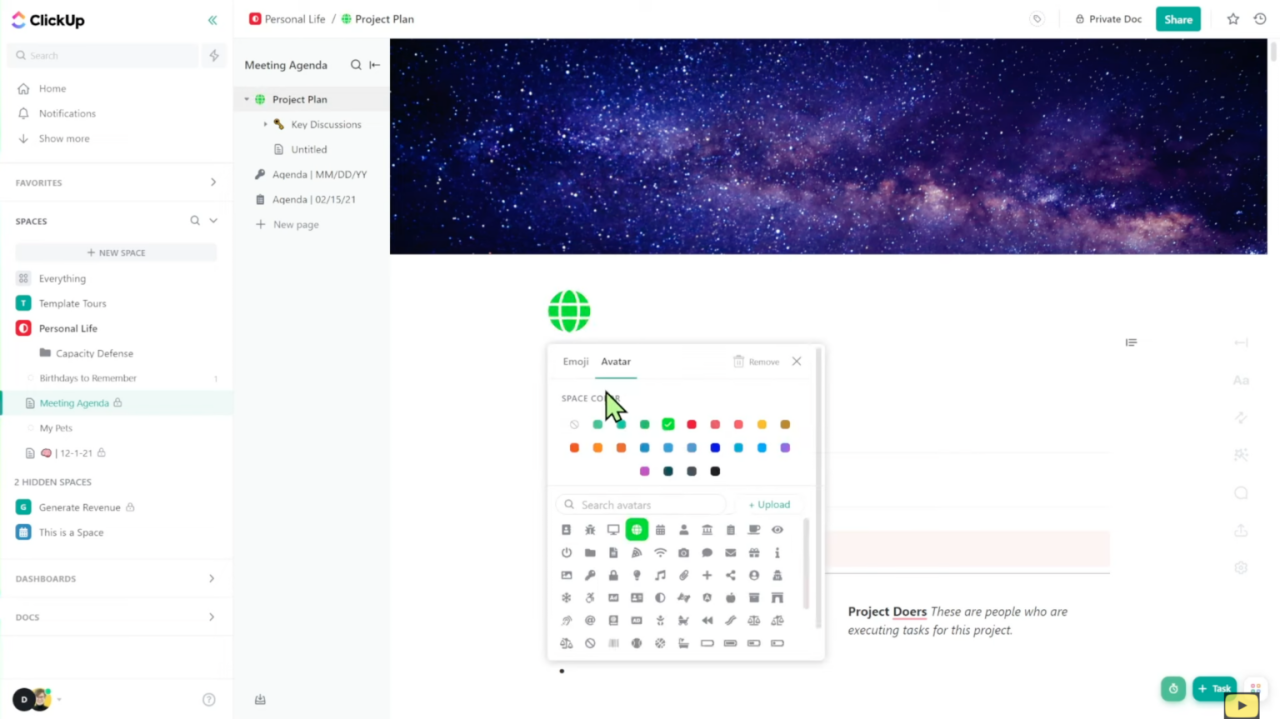Ever feel like your team’s knowledge is scattered across emails, chat threads, and countless documents? You’re not alone. ClickUp Docs offer a centralized solution, transforming the way teams create, share, and collaborate on essential information. They are more than just regular documents; they’re living, breathing repositories of your team’s collective wisdom, tightly integrated into your ClickUp workflow.
Imagine having instant access to project plans, meeting notes, and standard operating procedures, all neatly organized and readily available within your project management platform. This article dives deep into the power of ClickUp Docs, revealing how they can streamline communication, boost productivity, and ensure everyone is on the same page.
Prepare to discover practical tips, hidden features, and best practices to unlock the full potential of ClickUp Docs and revolutionize your team’s collaborative documentation process.
Unlocking the Power of ClickUp Docs: A Comprehensive Guide
ClickUp Docs are a core component of the ClickUp ecosystem, offering a robust solution for knowledge management, documentation, and collaboration. They’re designed to streamline workflows and enhance team efficiency.
Many organizations struggle with fragmented information scattered across various tools. ClickUp Docs offer a centralized hub to consolidate critical information, reducing information silos.
Using them can create a single source of truth that is accessible to everyone on the team, allowing for faster knowledge sharing. This, in turn, facilitates more informed decision-making.
This guide dives deep into understanding ClickUp Docs, exploring their functionalities and revealing how to leverage them for optimum workflow optimization. We’ll cover everything from the basics to advanced uses.
What are ClickUp Docs?
ClickUp Docs are collaborative documents within ClickUp, similar to Google Docs or Notion pages, but deeply integrated with ClickUp’s task management features.
Consider them digital workspaces where teams can brainstorm, document processes, share meeting notes, and collaborate on projects, all within the familiar ClickUp interface.
The integration within ClickUp is key. You can link tasks to specific sections of a Doc, easily access related information from within a task, and keep all project-related resources in one place.
Think of it as a knowledge base and project workspace all rolled into one. It’s a versatile tool that can be adapted to various needs, such as client portals or standard operating procedures.
Key Features and Benefits of ClickUp Docs
ClickUp Docs are packed with useful attributes. The benefits include features like real-time collaboration, permissions controls, and version history, all designed to improve team workflow.
Real-time collaboration allows team members to simultaneously edit and comment on a Doc. This promotes transparency and prevents misunderstandings.
Permissions controls ensure that sensitive information remains protected. They enable you to manage who can view, edit, or comment on specific Docs, granting you granular control.
With features like detailed revision tracking, you can also quickly revert to previous versions if needed, preventing loss of important work and enabling easy tracking of changes.
Furthermore, embedded ClickUp tasks, tables, and views keep everything synchronized. The integration is seamless, ensuring your documents are truly dynamic.
How to Create and Format ClickUp Docs
Creating a ClickUp Doc is straightforward. Click the “+” button within a Space, Folder, or List, and then select “Doc.” Give your Doc a meaningful title.
Once created, you have an array of formatting options. There are headings, paragraphs, lists, and tables at your disposal, as well as embedded media like images or videos.
Utilize the rich text editor to format your text, add images, embed videos, and create tables to organize information. You can add custom branding, too!
Leverage slash commands (e.g., “/heading,” “/list”) for quick formatting and adding various elements. These commands speed up the writing process.
Remember to keep your document structured. Use headings and subheadings to organize information. This allows for improved readability and quicker information retrieval.
Best Practices for Using ClickUp Docs Effectively

Start by outlining your Doc’s purpose and target audience. Before beginning, consider the goals you are trying to accomplish and the audience you are trying to reach.
Use a consistent naming convention to maintain organization. This makes it easier to find the correct resources, and reduces wasted time spent searching for files.
Establish clear roles and responsibilities for Doc ownership and maintenance. Make it clear who is responsible for updating the content, ensuring that it stays accurate and up to date.
Regularly review and update your Docs to keep them current and relevant. Stale information can lead to errors and confusion. It is important to maintain a strong information system.
Encourage team collaboration and feedback to improve Doc quality. Use commenting features to facilitate discussions. You will want to cultivate a collaborative environment.
Advanced ClickUp Docs Tips and Tricks
Explore ClickUp’s templates to save time and effort. There are numerous templates for meeting minutes, project plans, and standard operating procedures.
Use nested Docs to create a hierarchical knowledge base. Organize your Docs by topic, creating a clear and intuitive structure that is easy to navigate.
Master the art of linking Docs to tasks and other ClickUp elements. This provides context and ensures you can quickly access all relevant details from anywhere inside the platform.
Create custom Doc views to tailor information presentation. Use tables and databases to display specific information from other areas of ClickUp within your documents.
Take advantage of ClickUp’s automation features to streamline Doc creation and updates. Automate repetitive tasks and trigger actions based on Doc activity.